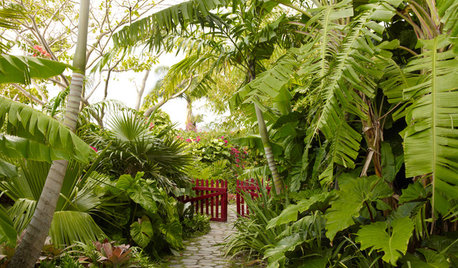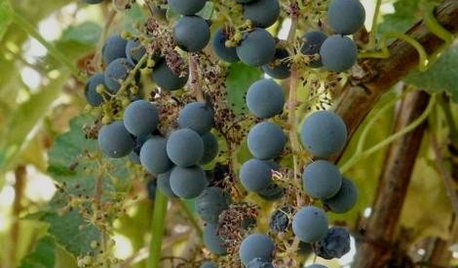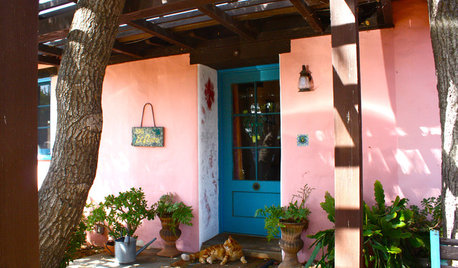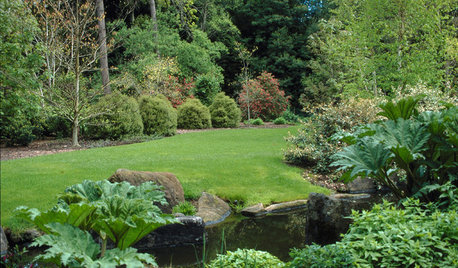Need help identifying this plum.. Wild?
jmsimpson9
13 years ago
Related Stories

FRUIT TREESHow to Grow Your Own Juicy Plums
Easier than other stone fruits and with a variety of colors to choose from, plums are a versatile garden addition
Full Story
EDIBLE GARDENSGrow Plum Hybrids for Your Favorite Fruit Flavors
Plums are cozying up with apricots, peaches and even cherries — here’s how to grow these hybrids for the best aspects of each
Full Story
GARDENING FOR BIRDSWild Birds Transform a Woman’s Garden and Life
How Sharon Sorenson created a wildlife haven and became the Bird Lady of Southern Indiana
Full Story
LANDSCAPE DESIGNWild Gardens Bring Excitement and Beauty to Landscapes
Forget what’s expected and ‘fashionable.’ Bold gardens teeming with site-appropriate plants make for a richer experience
Full Story
LANDSCAPE DESIGNLiving on the Edge of the Wild
When Mother Nature is your neighbor, the possibilities — and responsibilities — can be that much greater
Full Story
GARDENING GUIDESGreat Design Plant: Wild Lupine Dresses Up Rocky Gardens
Spiky blue flowers and a high tolerance for poor soil make this plant ideal for tough sites
Full Story
GARDENING GUIDESGreat Design Plant: Try California Wild Grape for Interest All Year
Sure, it’s stunning in fall. But the spring buds, summer grapes and gnarled winter vines are gorgeous too
Full Story
EXTERIOR COLOR18 Home Exteriors Gone Wild With Color
Technicolor dreams play out beautifully with these exterior paint jobs, showing that color confidence has its rewards
Full Story
GARDENING GUIDESYou Don't Need Prairie to Help Pollinators
Woodlands, marshes, deserts — pollinators are everywhere
Full Story
COLORWhat Goes With Purple Walls?
Make a plum wall come alive with art, warm metals, ivory, chartreuse, natural wood — and at least one wild card
Full Story






destin_gardener
jmsimpson9Original Author
Related Professionals
Canton Landscape Architects & Landscape Designers · Essex Landscape Architects & Landscape Designers · Towson Landscape Architects & Landscape Designers · Amesbury Landscape Contractors · Centereach Landscape Contractors · Duarte Landscape Contractors · El Sobrante Landscape Contractors · Fort Atkinson Landscape Contractors · Fruit Heights Landscape Contractors · Louisville Landscape Contractors · Melrose Landscape Contractors · Metairie Landscape Contractors · New Braunfels Landscape Contractors · Porterville Landscape Contractors · Whitehall Landscape Contractorsdestin_gardener
marknmt
jmsimpson9Original Author
alabamanicole
jmsimpson9Original Author
Suzi AKA DesertDance So CA Zone 9b
tyler_la
Suzi AKA DesertDance So CA Zone 9b
MrClint
jmsimpson9Original Author
Suzi AKA DesertDance So CA Zone 9b
destin_gardener
jmsimpson9Original Author
Suzi AKA DesertDance So CA Zone 9b
Suzi AKA DesertDance So CA Zone 9b
destin_gardener
Suzi AKA DesertDance So CA Zone 9b
jmsimpson9Original Author
tyler_la
Scott F Smith
alabamanicole
Suzi AKA DesertDance So CA Zone 9b
jmsimpson9Original Author
alabamanicole
Suzi AKA DesertDance So CA Zone 9b
Scott F Smith
Suzi AKA DesertDance So CA Zone 9b
Suzi AKA DesertDance So CA Zone 9b
alabamanicole
AKwildCat
Charlie
ricky633